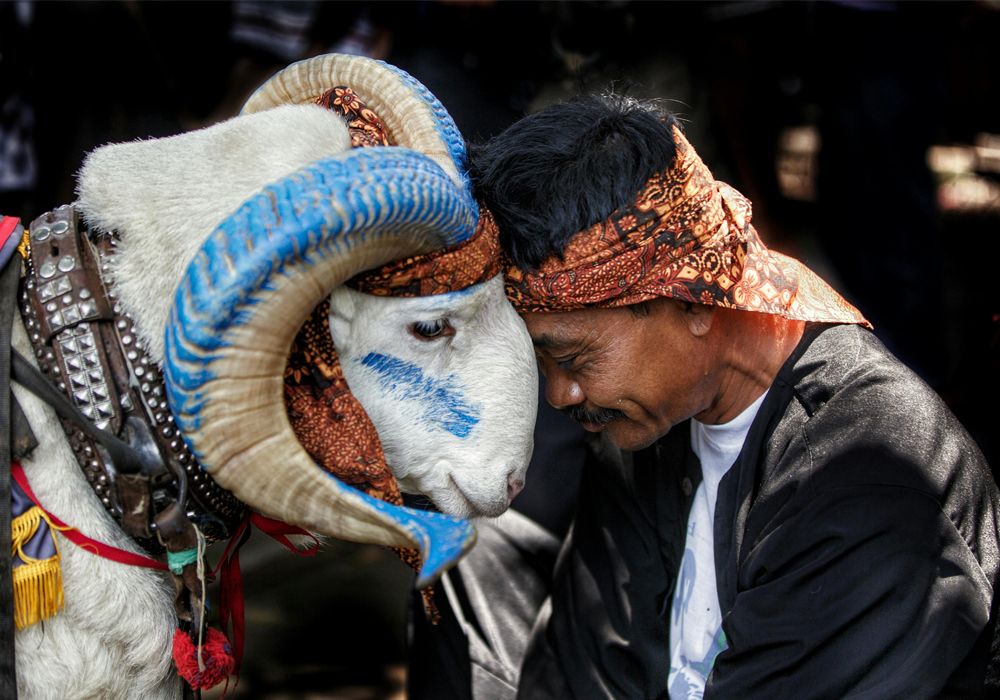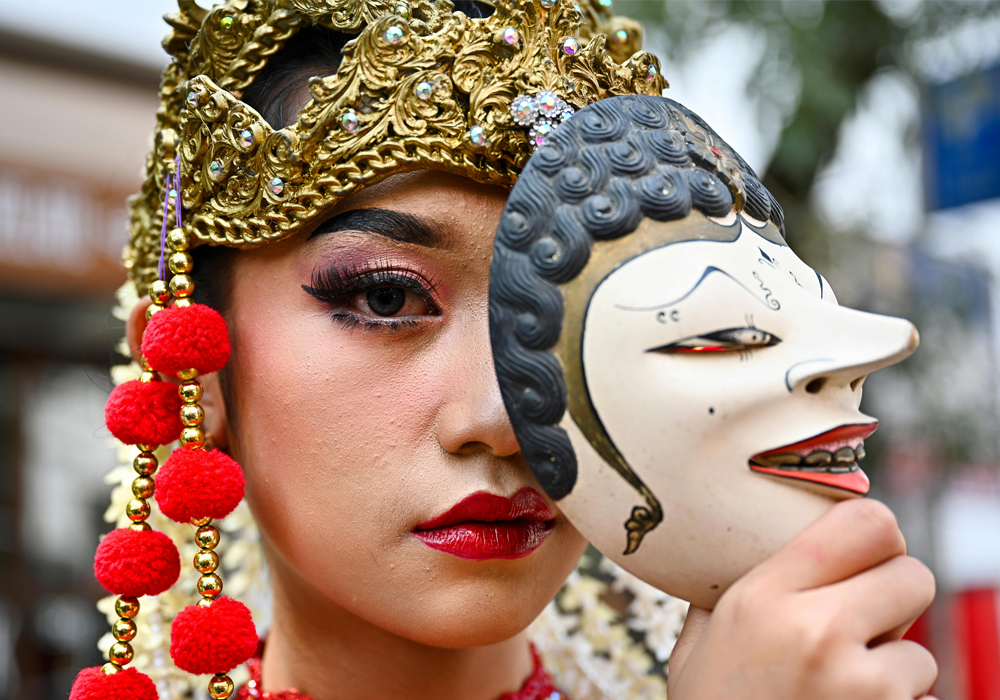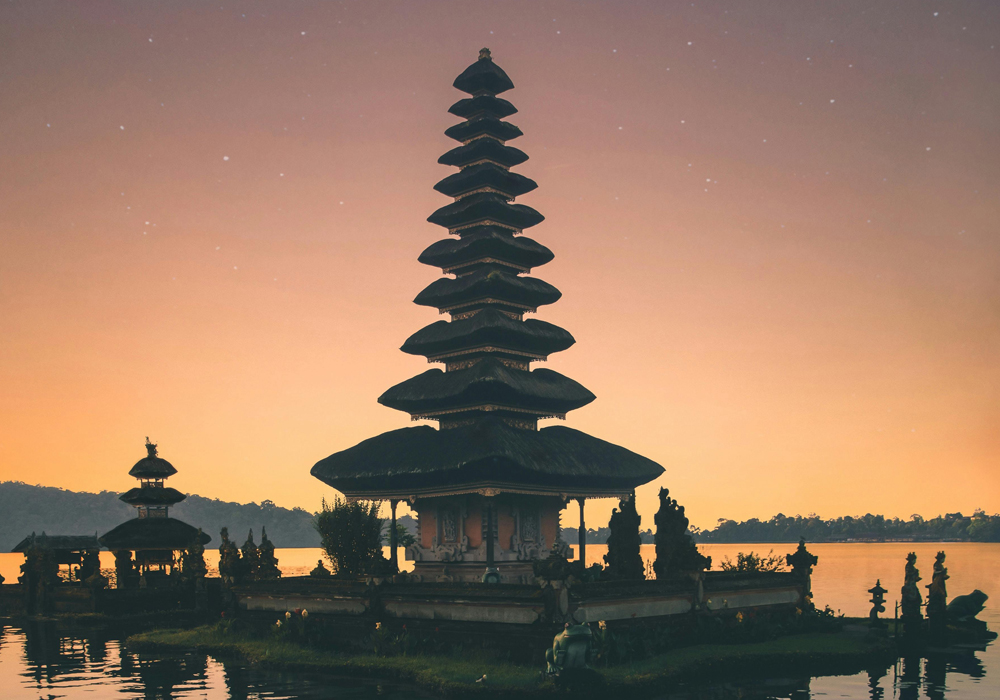Let’s embark on a whimsical journey into the world of Bahasa Indonesia, a language that’s less of a rigid rulebook and more of a friendly, adaptable companion! Forget dusty textbooks and prepare for a linguistic adventure that’s as vibrant and diverse as the Indonesian archipelago itself.
The Indonesian Language: A Unifying Melody in a Symphony of Tongues
Imagine a country stretched across thousands of islands, home to hundreds of different ethnic groups, each with its own unique traditions, music, and – you guessed it – language.
This is Indonesia, a land where linguistic diversity blossoms like a tropical garden. Amidst this incredible variety, one language stands tall, not as a conqueror, but as a harmonizer: Bahasa Indonesia. It’s the official glue that holds this magnificent mosaic together, a testament to unity in the face of astounding differences.

Forget about complex grammatical rules that tie your tongue in knots; Bahasa Indonesia is more like that chill friend who’s always easy to hang out with.
How Many Voices Whisper Across the Archipelago? An Unfathomable Number!
So, how many languages does this incredible nation harbor? Brace yourself: it’s not just a handful, or even a few dozen. Indonesia is a linguistic superpower, boasting over 700 distinct languages and dialects! Yes, you read that right – seven hundred!
From the melodic tones of Javanese, spoken by the largest ethnic group, to the rich narratives of Sundanese, the ancient sounds of Balinese, the strong accents of Batak, the unique cadences of Papuan languages, and countless others in between, Indonesia is a treasure trove of linguistic heritage.
Each language is a living, breathing testament to the history, culture, and identity of the people who speak it. It’s a staggering number that truly highlights the country’s unparalleled cultural richness, making it one of the most linguistically diverse nations on Earth.
Why Bahasa Indonesia Became the Nation’s Unifier: A Story of Wisdom, Not War
In a land teeming with over 700 linguistic identities, picking a “national language” could have been a recipe for disaster, sparking endless debates and resentments.
But the architects of independent Indonesia were incredibly wise. Instead of choosing the language of the largest ethnic group (which would have been Javanese, potentially alienating others), they made a brilliant, unifying choice: Malay.
This wasn’t just any language; Malay had been the lingua franca of trade, diplomacy, and communication across the archipelago for centuries. It was the language of the markets, the ports, and the coastal communities, meaning it was already somewhat familiar to people from various backgrounds.
By declaring a standardized version of Malay – which they named Bahasa Indonesia – as the national language in the Youth Pledge of 1928, long before independence, they performed a linguistic sleight of hand.

It wasn’t the language of any single dominant group asserting its power, but rather a neutral, accessible bridge. It was a language that belonged to everyone and, at the same time, to no one in particular.
This strategic decision was crucial for forging a sense of shared identity and nationhood among disparate ethnic groups, paving the way for a united Indonesia. It fostered communication, facilitated education, and became a cornerstone of the nascent national identity.
It was less about imposing a language and more about adopting a common ground, enabling millions to understand and collaborate for a shared future.
The Fate of the Other 700+: Thriving in Harmony, Not Extinction
With Bahasa Indonesia taking center stage, what happened to the hundreds of other languages? Did they fade into oblivion, silenced by the rise of the national tongue? Absolutely not! This is where the Indonesian linguistic story gets even more fascinating.
The adoption of Bahasa Indonesia wasn’t about eradicating local languages; it was about coexistence and functional specialization.
Most Indonesians are effectively bilingual, or even multilingual. They grow up speaking their regional language at home, with family, and within their local communities.
This “mother tongue” is where cultural nuances, traditional stories, and deeply ingrained identities reside. It’s the language of lullabies, local jokes, and ancestral wisdom.
Then, when they go to school, engage with national media, travel to other islands, or conduct official business, they switch seamlessly to Bahasa Indonesia.
Think of it like this: your regional language is your cozy, comfortable family home, filled with familiar faces and cherished memories. Bahasa Indonesia is the grand public square, where everyone gathers, interacts, and builds a shared future.
Both spaces are vital and thrive simultaneously. While there are, unfortunately, some smaller, more isolated languages that face the threat of extinction due to fewer speakers and lack of transmission, the vast majority of Indonesia’s regional languages remain vibrant and alive, actively used in daily life.
This dual-language system is a remarkable success story, allowing cultural diversity to flourish while maintaining national cohesion.
How Indonesians Master the National Tongue: From Lullabies to Learning Labs
So, how do Indonesians effortlessly navigate between their regional languages and Bahasa Indonesia? It’s a process deeply embedded in their lives from a very young age.

For many, the introduction to Bahasa Indonesia begins informally, almost by osmosis. Even if a regional language is spoken at home, children are exposed to Bahasa Indonesia through television, radio, music, and interactions with people from different ethnic backgrounds in their neighborhoods, especially in urban areas or multicultural settings like Bali. They pick up common phrases and songs, absorbing the sounds and rhythms of the national language.
The formal learning truly kicks in when children start school. Bahasa Indonesia is the medium of instruction for all subjects, from mathematics to history, across the entire national curriculum.
From elementary school right through to university, every lesson is delivered in Bahasa Indonesia. This immersion is incredibly effective.
Teachers, who often come from diverse linguistic backgrounds themselves, ensure that students develop strong proficiency in reading, writing, and speaking the national language. School textbooks are all in Bahasa Indonesia, and exams are conducted in it.
Beyond the classroom, the language is reinforced everywhere. National news channels, popular movies, pop music, government announcements, and common street signs are all in Bahasa Indonesia.
This constant, pervasive exposure solidifies their understanding and fluency. Indonesians don’t just learn it; they live it. It’s not uncommon to hear a group of friends chatting, effortlessly code-switching between their regional dialect and Bahasa Indonesia, picking the most suitable word or phrase to express themselves.
This organic, integrated learning environment ensures that Bahasa Indonesia remains a living, evolving language, constantly reinforced and adapted by its vast and diverse population. It’s a natural, daily dance between the local and the national, ensuring that everyone can participate in the grand conversation of Indonesia.
